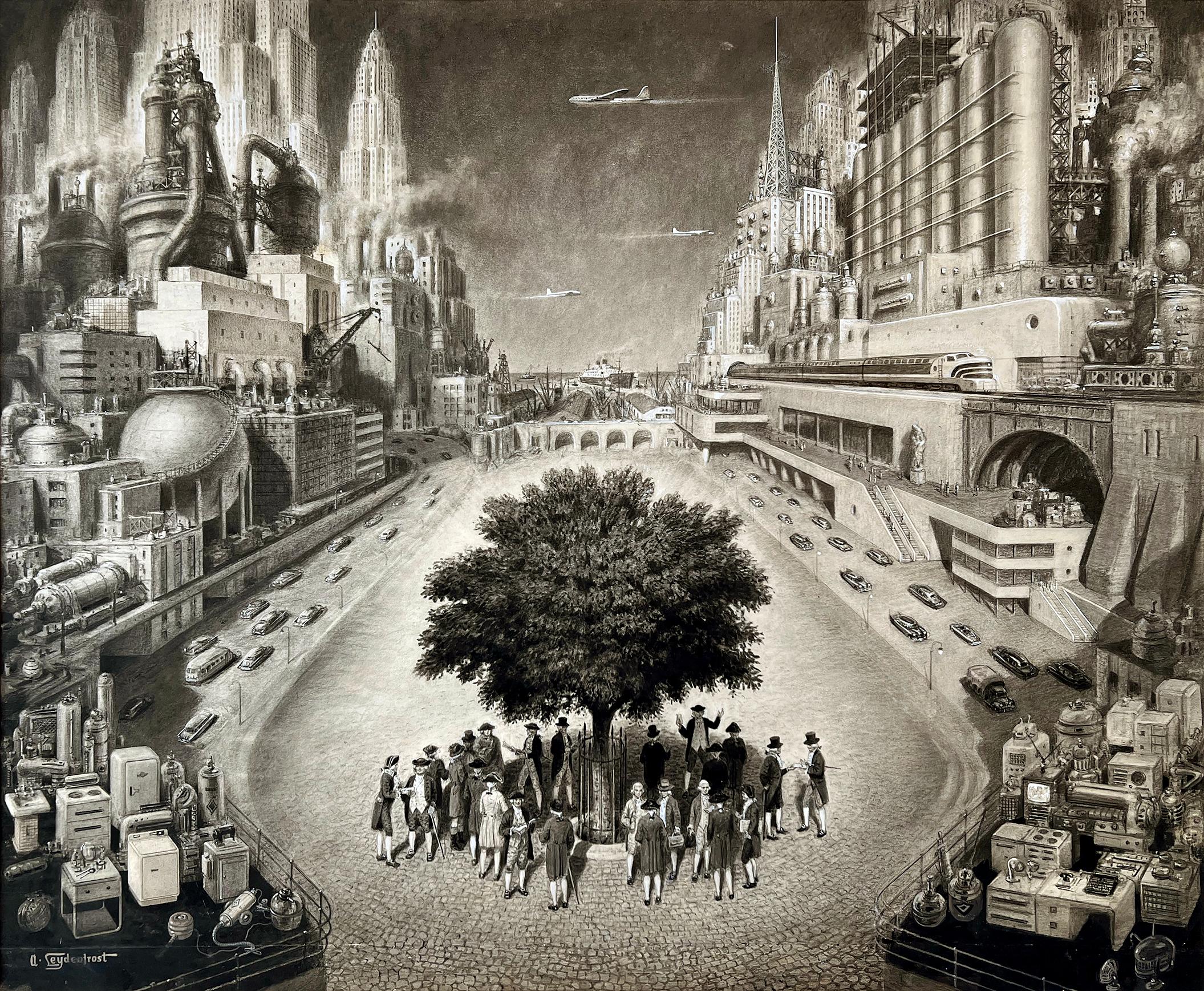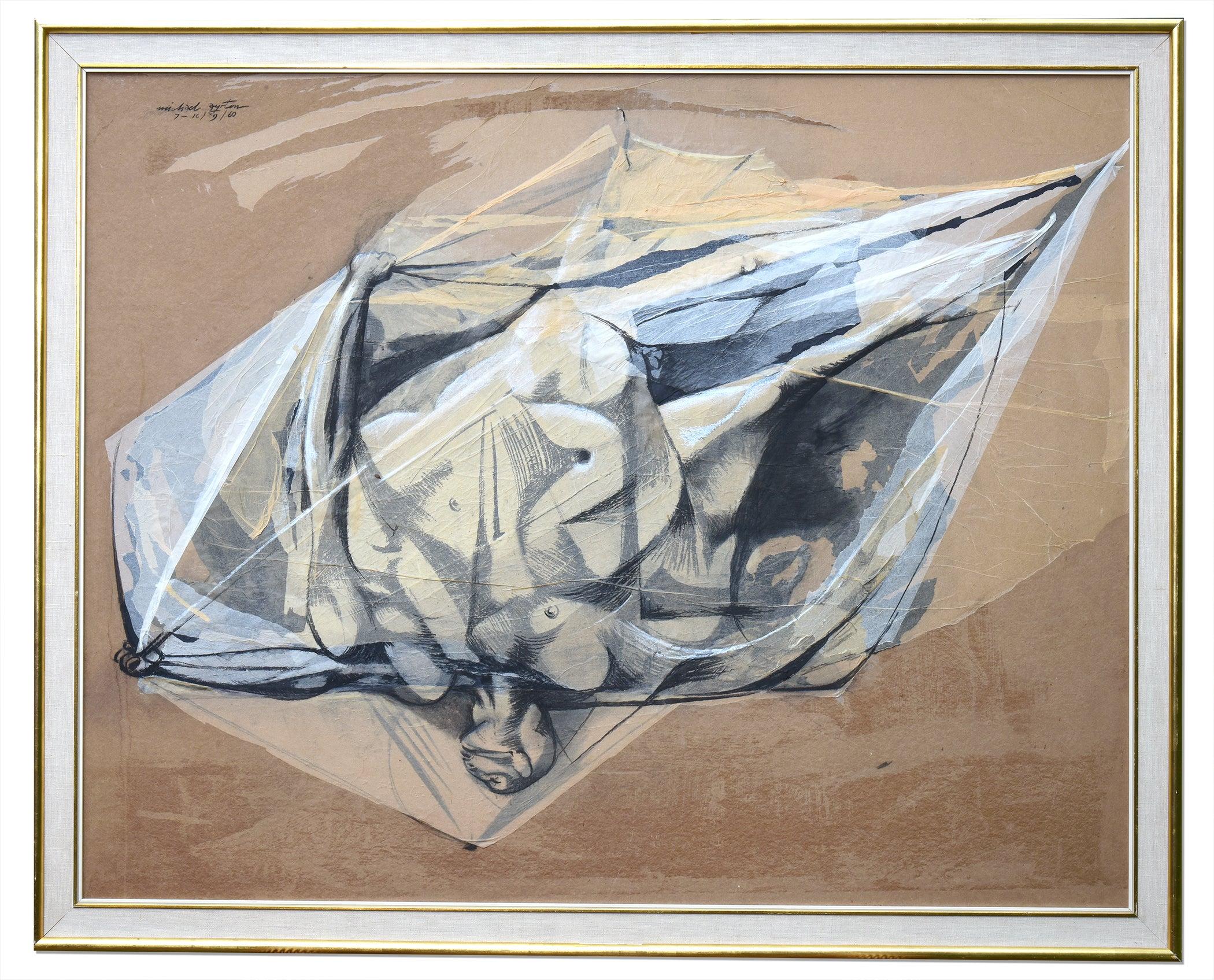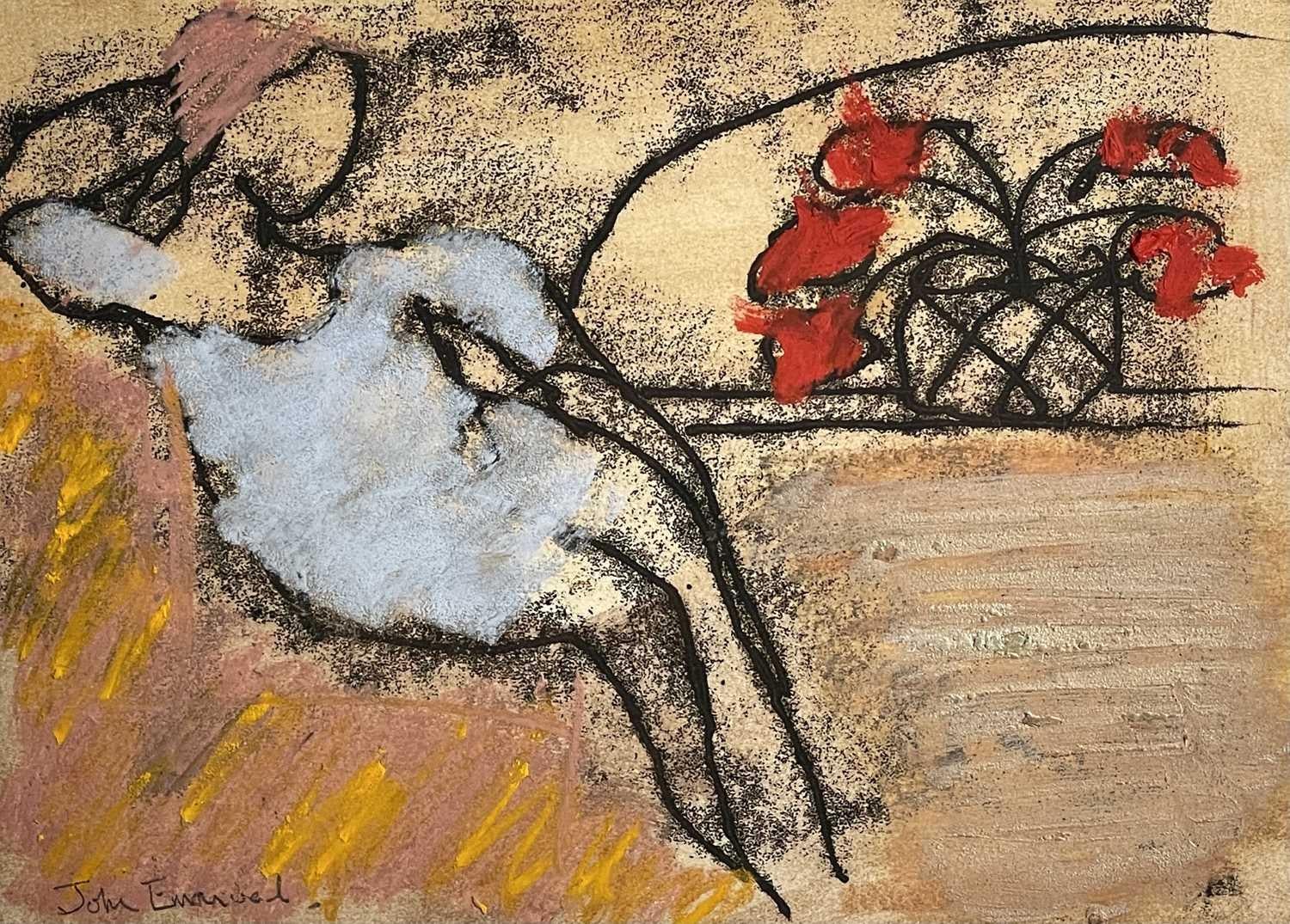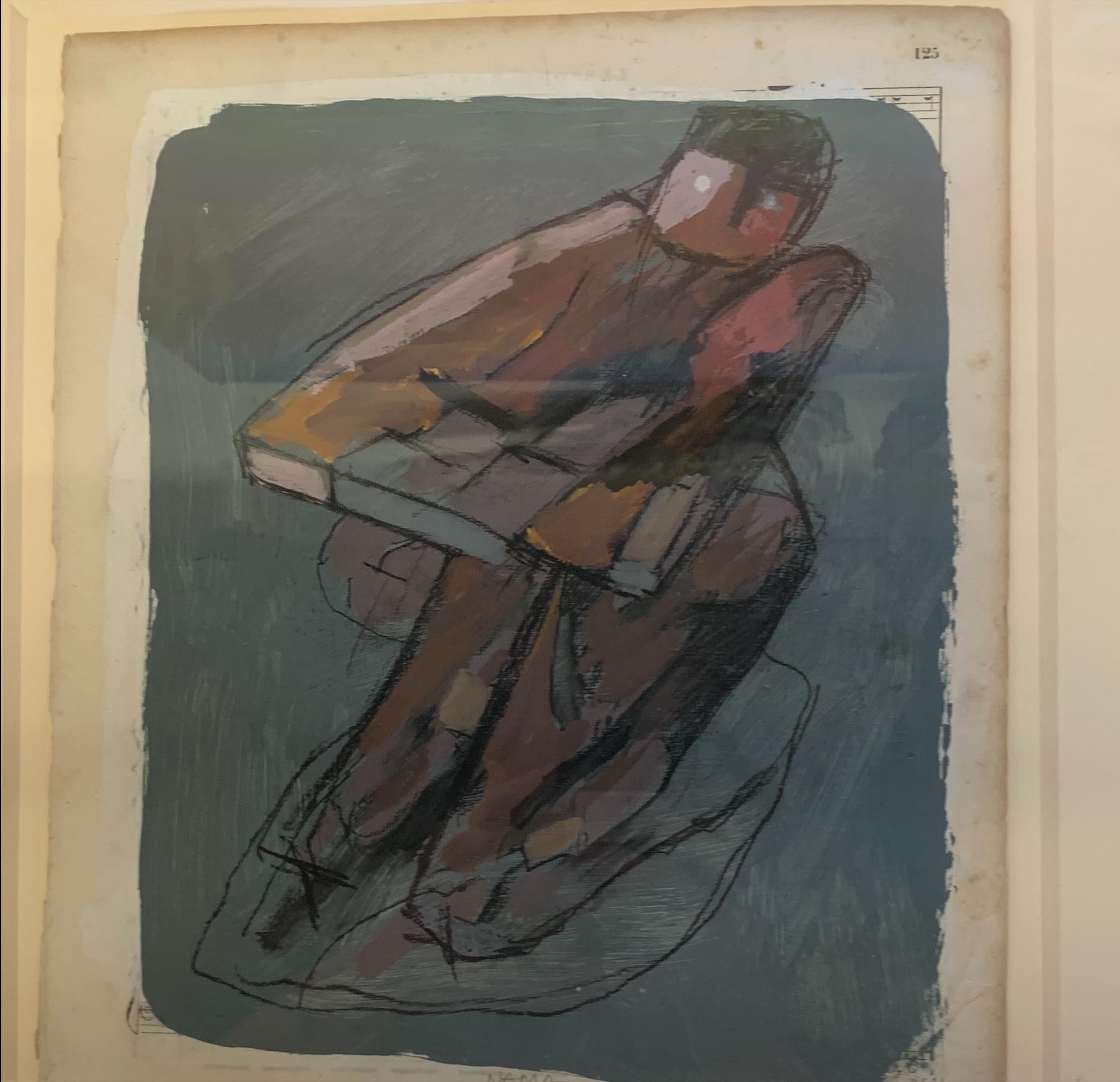Items Similar to The Great Drawing- Room Was Haunted by a Tuneful Spirit That Came and Went
Want more images or videos?
Request additional images or videos from the seller
1 of 4
Jessie Willcox SmithThe Great Drawing- Room Was Haunted by a Tuneful Spirit That Came and Went 1915
1915
About the Item
Date: 1915
Medium: Watercolor, Gouache and Charcoal on Board
Dimensions: 26.25" x 16.50"
Signature: Signed Lower Left
LITERATURE
Louisa May Alcott, Little Women, Boston, Massachusetts, 1915, illustrated facing page 76
Louisa May Alcott, Little Women, Boston, Massachusetts, 1922, illustrated facing page 48
Edward D. Nudelman, Jessie Willcox Smith: A Bibliography, Gretna, Louisiana, 1989, pp. 69, 87, illustrated in color p. 87
- Creator:Jessie Willcox Smith (1863 - 1935, American)
- Creation Year:1915
- Dimensions:Height: 26.25 in (66.68 cm)Width: 16.5 in (41.91 cm)
- Medium:
- Period:
- Condition:
- Gallery Location:Fort Washington, PA
- Reference Number:1stDibs: LU38431991453
About the Seller
5.0
Recognized Seller
These prestigious sellers are industry leaders and represent the highest echelon for item quality and design.
Gold Seller
These expertly vetted sellers are highly rated and consistently exceed customer expectations.
Established in 1995
1stDibs seller since 2016
107 sales on 1stDibs
Typical response time: 5 hours
- ShippingRetrieving quote...Ships From: Fort Washington, PA
- Return PolicyA return for this item may be initiated within 14 days of delivery.
More From This SellerView All
- Group of Four: Baseball Themed IllustrationsLocated in Fort Washington, PAMedium: Watercolor, Gouache & Charcoal on Board Date: 1950s Dimensions: Various Sizes Signature: Unsigned Contact for exact dimensions. AMERICAN ARTIST (20th Century) Group of four...Category
1950s Figurative Paintings
MaterialsCharcoal, Board, Gouache, Watercolor
- Horse RaceLocated in Fort Washington, PASigned Lower Right Framed under glassCategory
20th Century Figurative Paintings
MaterialsInk, Charcoal, Mixed Media, Watercolor, Board, Pen
- Couple Sitting Among Lanterns, Cover for Vanity FairBy Everett ShinnLocated in Fort Washington, PAMedium: Pastel, Gouache, and Black Crayon on Paperboard Sight Size 22.88" x 17.50", Framed 31.75" x 26.50" Signature: Signed EVERETT SHINN and Dated Vanity Fair Cover...Category
1910s Figurative Paintings
MaterialsCrayon, Pastel, Gouache, Board
- Twas The Night Before ChristmasBy Jessie Willcox SmithLocated in Fort Washington, PAMedium: Gouache and Watercolor on Board Sight Size 18.00" x 17.00", Framed 25.00" x 24.00" "Twas The Night Before Christmas" by Clemen...Category
1910s Figurative Paintings
MaterialsGouache, Watercolor, Board
- The Coiffure, Collier's Magazine CoverBy Frank Xavier LeyendeckerLocated in Fort Washington, PAApproximate Date: Apr 23, 1903 Medium: Gouache on Board Signature: Signed Lower Right Dimensions: 22.50" x 15.50"Category
Early 1900s Figurative Paintings
MaterialsGouache, Board
- Ye Lorde Of Misrule, TriptychBy Frank Xavier LeyendeckerLocated in Fort Washington, PAMedium: Gouache and Watercolor on Board Signature: Signed Lower Right Exhibitions: Allentown Art Museum, At the Edge: Art of the Fantastic (June 3- September 9, 2013)Category
Early 20th Century Figurative Paintings
MaterialsGouache, Watercolor, Board
You May Also Like
- Futurist Vision - Mid-Century New York Skyline - Industrial ProgressLocated in Miami, FLRarely do you come across a work of art that is vastly different than just about anything you see. This work is undeniably brilliant and a sheer pleasure to behold. Alexander Leydenfrost...Category
1950s Art Deco Landscape Paintings
MaterialsGouache, Charcoal, Graphite, Board
- "Icarus Suspended" Abstract Mythical Figurative Mixed MediaBy Michael AyrtonLocated in Detroit, MI“Icarus Suspended” is an extraordinary painting of Ayrton's obsession with flight, myths, mirrors and mazes. This complex piece shows a figure in flight, frozen in action, either swooping down or, perhaps, falling to earth. Named after the Greek mythological figure, Icarus, who along with his father attempted to escape from Crete by means of wings that his father constructed from feathers and wax. Flying too close to the sun the wax melted and both fell to earth. The positioning of Ayrton's figure is reminiscent of "The Fall of Icarus" by Jacob Peter Gowy, Museo Nacional del Prado. This is part of a series of artworks on Icarus some sculptural and some three-dimensional paintings on canvas. Verso contains gallery label Matthiesen Gallery, 142 Bond St., London, England, with a signature and text in upper right corner: "To Morton Schotnick. Bought on the occasion of The Archives of American Arts Tour to London, England. October 10, 1961. Michael Ayrton...Category
1960s Modern Abstract Paintings
MaterialsCharcoal, Mixed Media, Gouache, Board
- "Leaning in Chair" Mid-Century FigurativeBy Gloria DudfieldLocated in Arp, TXGloria Dudfield Leaning in Chair 1960's Gouache and Charcoal on Paper 11.75"x17.75" unframed. Gloria (Fischer) Dudfield July 12, 1922 – May 27, 2015 Came from a portfolio of her wor...Category
Mid-20th Century Abstract Mixed Media
MaterialsPaper, Charcoal, Gouache
- Reclining With Tulips: Contemporary Figurative Mixed Media PaintingBy John EmanuelLocated in Brecon, PowysClassic John Emanuel figurative painting. Mixed media on paper, signed and well framed. Excellent condition Framed 13" x 16". Image 7.5" x 10.25" 21st CenturyCategory
Early 2000s Contemporary Mixed Media
MaterialsCharcoal, Oil, Gouache
- UntitledBy George NamaLocated in Santa Monica, CAGouache and charcoal on antique music paperCategory
2010s Contemporary Mixed Media
MaterialsCharcoal, Gouache
- Rare Modernist Hungarian Rabbi Pastel Drawing Gouache Painting Judaica Art DecoBy Hugó ScheiberLocated in Surfside, FLRabbi in the synagogue at prayer wearing tallit and tefillin. Hugó Scheiber (born 29 September 1873 in Budapest – died there 7 March 1950) was a Hungarian modernist painter. Hugo Scheiber was brought from Budapest to Vienna at the age of eight where his father worked as a sign painter for the Prater Theater. At fifteen, he returned with his family to Budapest and began working during the day to help support them and attending painting classes at the School of Design in the evening, where Henrik Papp was one of his teachers. He completed his studies in 1900. His work was at first in a post-Impressionistic style but from 1910 onward showed his increasing interest in German Expressionism and Futurism. This made it of little interest to the conservative Hungarian art establishment. However, in 1915 he met the great Italian avant-gardist Filippo Tommaso Marinetti and the two painters became close friends. Marinetti invited him to join the Futurist Movement. The uniquely modernist style that he developed was, however, closer to German Expressionism than to Futurism and eventually drifted toward an international art deco manner similar to Erté's. In 1919, he and his friend Béla Kádar held an exhibition at the Hevesy Salon in Vienna. It was a great success and at last caused the Budapest Art Museum to acquire some of Scheiber's drawings. Encouraged, Scheiber came back to live in Vienna in 1920. A turning point in Scheiber's career came a year later, when Herwarth Walden, founder of Germany's leading avant-garde periodical, Der Sturm, and of the Sturm Gallery in Berlin, became interested in Scheiber's work. Scheiber moved to Berlin in 1922, and his paintings soon appeared regularly in Walden's magazine and elsewhere. Exhibitions of his work followed in London, Rome, La Paz, and New York. Scheiber's move to Germany coincided with a significant exodus of Hungarian artists to Berlin, including Laszlo Moholy-Nagy and Sandor Bortnyik. There had been a major split in ideology among the Hungarian avant-garde. The Constructivist and leader of the Hungarian avantgarde, Lajos Kassák (painted by Hugó Scheiber in 1930) believed that art should relate to all the needs of contemporary humankind. Thus he refused to compromise the purity of his style to reflect the demands of either the ruling class or socialists and communists. The other camp believed that an artist should be a figurehead for social and political change. The fall out and factions that resulted from this politicisation resulted in most of the Hungarian avant gardists leaving Vienna for Berlin. Hungarian émigrés made up one of the largest minority groups in the German capital and the influx of their painters had a significant effect on Hungarian and international art. Another turning point of Scheiber's career came in 1926, with the New York exhibition of the Société Anonyme, organized by Katherine Dreier. Scheiber and other important avant garde artists from more than twenty-three countries were represented. In 1933, Scheiber was invited by Marinetti to participate in the great meeting of the Futurists held in Rome in late April 1933, Mostra Nazionale d’Arte Futurista where he was received with great enthusiasm. Gradually, the Hungarian artists began to return home, particularly with the rise of Nazism in Germany. Kádar went back from Berlin in about 1932 and Scheiber followed in 1934. He was then at the peak of his powers and had a special flair in depicting café and cabaret life in vivid colors, sturdily abstracted forms and spontaneous brush strokes. Scheiber depicted cosmopolitan modern life using stylized shapes and expressive colors. His preferred subjects were cabaret and street scenes, jazz musicians, flappers, and a series of self-portraits (usually with a cigar). his principal media being gouache and oil. He was a member of the prestigious New Society of Artists (KUT—Képzőművészek Új Társasága)and seems to have weathered Hungary's post–World War II transition to state-communism without difficulty. He continued to be well regarded, eventually even receiving the posthumous honor of having one of his images used for a Russian Soviet postage stamp (see image above). Hugó Scheiber died in Budapest in 1950. Paintings by Hugó Scheiber form part of permanent museum collections in Budapest (Hungarian National Museum), Pecs (Jannus Pannonius Museum), Vienna, New York, Bern and elsewhere. His work has also been shown in many important exhibitions, including: "The Nell Walden Collection," Kunsthaus Zürich (1945) "Collection of the Société Anonyme," Yale University Art Gallery, New Haven, Connecticut (1950) "Hugó Scheiber: A Commemorative Exhibition," Hungarian National Museum, Budapest (1964) "Ungarische Avantgarde," Galleria del Levante, Munich (1971) "Paris-Berlin 1900-1930," Centre Georges Pompidou, Paris (1978) "L’Art en Hongrie, 1905-1920," Musée d’Art et l’Industrie, Saint-Etienne (1980) "Ungarische Avantgarde in der Weimarer Republik," Marburg (1986) "Modernizmus," Eresz & Maklary Gallery, Budapest (2006) "Hugó Scheiber & Béla Kádár," Galerie le Minotaure, Paris and Tel Aviv (2007) Hugó Scheiber's paintings continue to be regularly sold at Sotheby's, Christie's, Gillen's Arts (London), Papillon Gallery (Los Angeles) and other auction houses. He was included in the exhibition The Art Of Modern Hungary 1931 and other exhibitions along with Vilmos Novak Aba, Count Julius Batthyany, Pal Bor, Bela Buky, Denes Csanky, Istvan Csok, Bela Czobel, Peter Di Gabor, Bela Ivanyi Grunwald, Baron Ferenc Hatvany, Lipot Herman, Odon Marffy, C. Pal Molnar...Category
Early 20th Century Modern Figurative Paintings
MaterialsPaper, Charcoal, Pastel, Watercolor, Gouache





